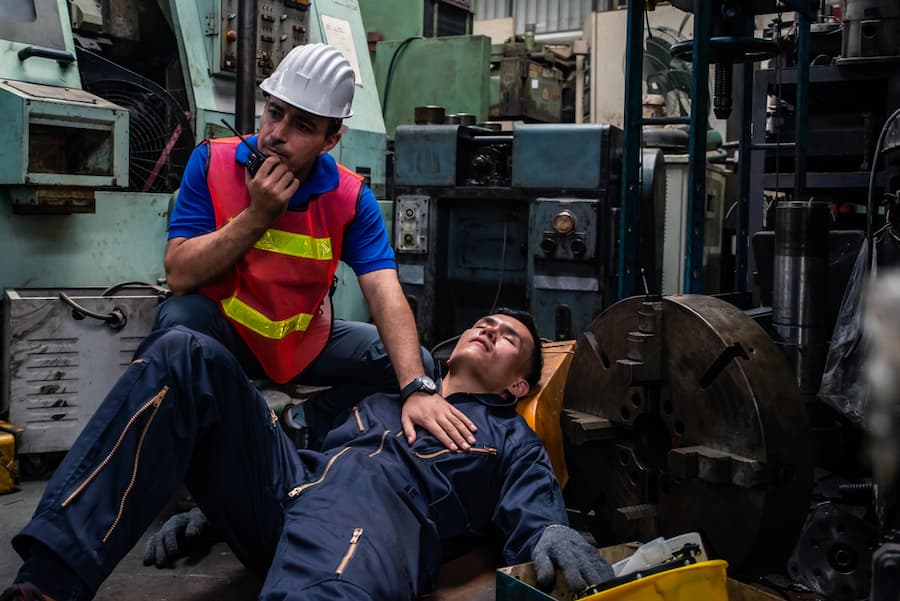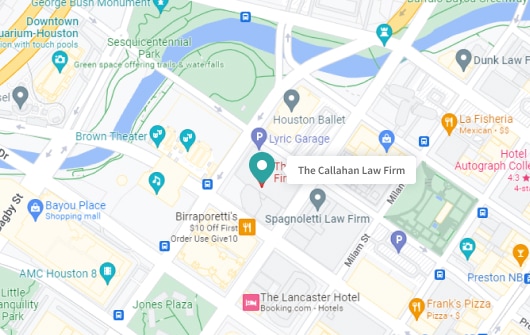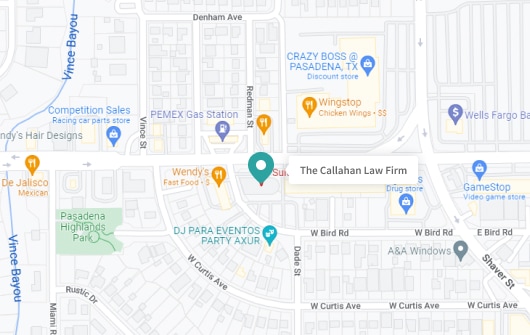Defective Machinery Lawyer in Houston

Many Houston-area workers use heavy equipment and machinery to perform their job duties, particularly those in the oil and gas, construction, manufacturing and maritime industries. When industrial machinery and equipment are defective or malfunctioning, these workers can suffer severe, life-altering injuries on the job.
If you were hurt in an accident involving defective machinery or equipment in Houston or elsewhere in the state of Texas, you likely face costly medical bills, lost wages, pain, and emotional trauma. While nothing can undo the harm you’ve experienced, you could be entitled to compensation for your injuries and related losses.
At The Callahan Law Firm, we know what’s at stake after a devastating injury. Our legal team is dedicated to helping injured people in Houston and throughout Texas seek the justice and financial relief they deserve. We have over 25 years of experience taking on powerful companies and holding responsible parties accountable for their wrongdoing. Let us put our resources to work for you.
Contact The Callahan Law Firm today for a free consultation with a defective machinery lawyer in Houston.
What Makes a Machine Defective?
A defect in a machine makes it dangerous to use and be near, even when it is used as intended. A machine or equipment defect typically falls within one of three categories:
- Design defects – A design defect is something inherent in the design of a product that makes it unreasonably dangerous. This could mean the overall design of a product or a part or component. Due to this design flaw, the machine or equipment does not work as it should, or it is unreasonably dangerous to use. A design defect will impact an entire line of products with the same design specifications.
- Manufacturing defects – A manufacturing defect is a deviation from design specifications during production that renders a product unreasonably dangerous. Manufacturing defects happen during the manufacturing process. While the design of the machine may be sound, problems on the production line, contamination, poor quality control, or the use of inferior materials can result in the components of a machine being flawed. A manufacturing defect will typically impact specific batches of a product line but not the entire line.
- Marketing defects – When consumers are not adequately warned about potential hazards of specific machinery or do not receive proper instructions for its safe use, this can be the basis for a marketing defect.
Common examples of dangerous defects in machinery and equipment include:
- Lack of safety components such as safety guards
- Mechanical defects causing product failure or malfunction
- Flawed or defective internal components such as gears, shafts, bearings and seals
- Material failure leading to cracks, fractures, and catastrophic failure
- Inadequate electrical grounding
- Lack of warnings, warning labels, or instructions for proper use
What Causes Defective Machinery and Defective Equipment Accidents?
Defects in industrial machinery and equipment can result in result in catastrophic accidents because they prevent machinery and equipment from operating as intended or otherwise cause it to be unreasonably dangerous. Design defects impact the functionality of a product and make it easier for machinery and equipment to break down and ultimately fail. Defective machinery accidents often happen as a result of one or more of the following:
- Mechanical component failure due to repetitive stress and fatigue
- Material failure due to poor material selection or negligent material processing
- Leaks including those caused by inadequate or failed seals
- Failure to properly ground resulting in electrocutions and electric shock injuries
- Inadequate safety features such as pressure relief valves, warning systems, power cutoff, and safety guards
- Excessive heat buildup
- Manufacturing mistakes including failing to follow design specifications
- Use of low-quality or improper materials in the design of the product or during production
- Introduction of contaminants during manufacturing
- Inadequate quality control
- Inadequate warnings and instructions
Common Types of Defective Machinery Involved in Accidents
Industrial machinery and equipment are used across various industries to streamline processes that previously took teams of workers months or even years to complete. While machinery has revolutionized industries like manufacturing, oil and gas production, petrochemical refining, construction, and maritime, it has also increased the rate of accidents in these and other industries.
Common types of defective machinery and equipment involved in accidents include the following:
- Forklifts
- Manlifts
- Cranes
- Rotating equipment such as pumps, compressors and turbines
- Valves
- Pipelines and flanges
- Pressure vessels
- Storage tanks
- Welding equipment
- Power tools such as hand saws, table saws and grinders
- Cutting machines including table saws
- Presses such as drill presses and punch presses
- Lathes
- Stamping machines
- Packaging machines
- Tires on motor vehicles
- Bulldozers
- Skid steers
- Backhoes
- Trackhoes
Common Defective Machinery Injuries
Heavy machinery can cause a wide range of life-altering injuries. Common injuries caused by defective equipment include:
- Neck and back injuries
- Spinal cord injuries and paralysis
- Crush injuries
- Broken bones
- Amputations
- Traumatic brain injuries (TBI)
- Soft tissue damage
- Thermal burns
- Chemical burns
- Electrocutions
- Electric shock injuries
- Fatalities
Defective Machinery Lawsuits
In the cases of injuries caused by defective machinery or defective equipment, you may be able to file a product liability lawsuit based on design defect, manufacturing defect and/or marketing defect. These cases seek to hold responsible companies accountable for the design, manufacture, marketing and/or distribution of defective consumer products, including machinery and equipment.
If you were injured in a defective machinery accident, those responsible for the unreasonably dangerous product and the injuries caused could include one or more of the following:
- The company that designed the product and its components
- The company that manufactured the product and its components
- The distributors and seller of the product and its components
- The company responsible for maintaining and repairing the product
How Do You Prove Machinery Design Defects?
Proving in a court of law that a defective machine or defective equipment caused an injury is a challenging and expensive process.
In sum, for a design defect claim in the state of Texas, a plaintiff must prove there is a design defect that rendered the product unreasonably dangerous. To prove a manufacturing defect, one must prove that the product deviated in its construction or quality from its specifications or planned output in a manner that renders it unreasonably dangerous. To prove a marketing defect, one must prove there was a defect in warnings or instructions that was a producing cause of the injury. In addition, a plaintiff can bring a claim for negligence in the design, manufacture and/or warning or instruction regarding use of a product. These are very general statements of the types of product liability claims that can be made and what must be proven.
A product liability claim on any one of these theories of liability is a complex and expensive process. That’s why it is essential to have an experienced defective product liability attorney on your side who has the experience, skill and resources to handle your defective machinery or defective equipment case.
Contact Our Experienced Houston Defective Machinery Lawyers Today
You could be entitled to compensation if you suffered injuries in an accident involving defective machinery or equipment in Houston or anywhere else in the state of Texas. The Callahan Law Firm stands ready to help you get justice from those responsible for what happened and pursue financial compensation for your injuries and damages.
Contact our experienced Houston defective machinery and defective equipment lawyers today to learn more about your legal options during a free consultation and claim review.











